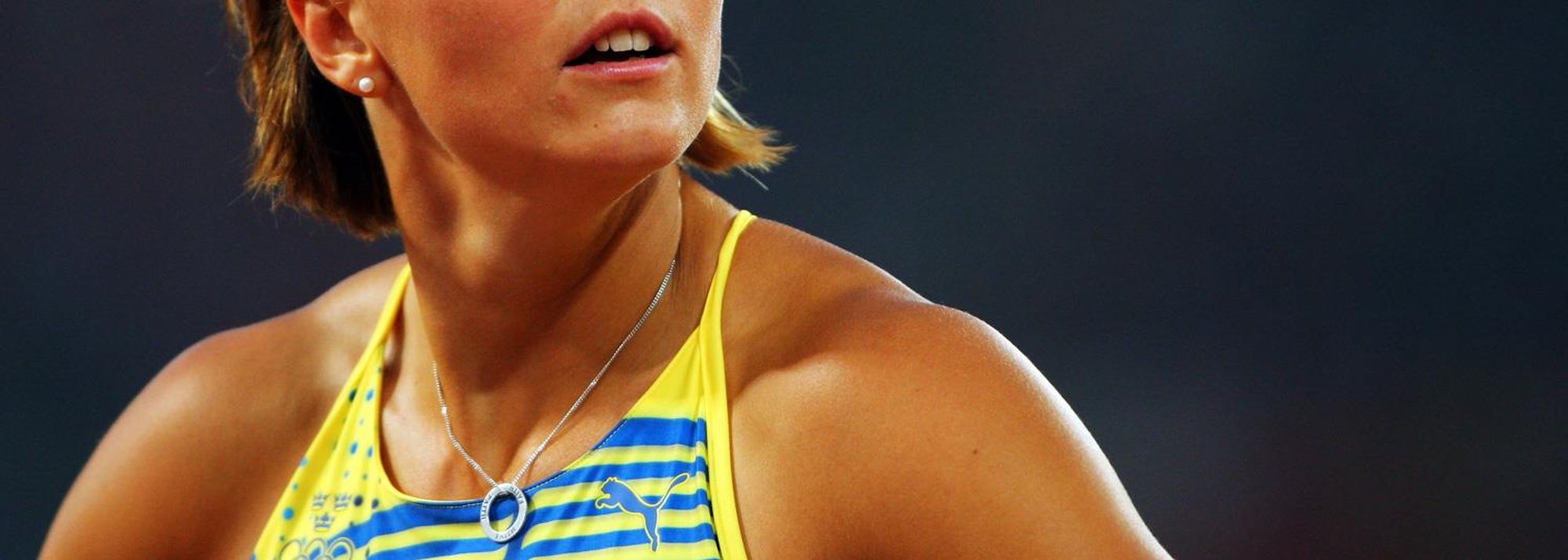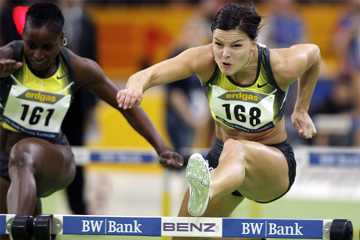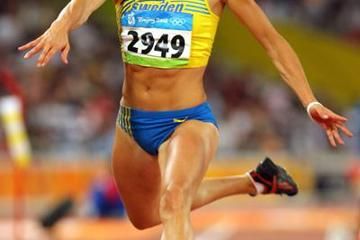Swedish sprint hurdler Susanna Kallur (© Getty Images)
It has been almost three-and-a-half years since Susanna Kallur last lined up for a race. During that time, the Swedish sprint hurdler has celebrated her 30th birthday, undergone surgery, and given birth to her first child. But she is now in training with an eye on competing at the 2016 Olympic Games in Rio.
In the 2004-2008 Olympic cycle, Kallur was shaping up to be Sweden’s best hope of a gold medal at the Beijing Games. She won the 2006 European 100m Hurdles title in front of her home crowd in Gothenburg, then seven months later took the continental indoor crown, retaining her title from 2005.
In the summer of 2007, Kallur reduced her lifetime best to 12.49, but her career-defining moment came during the 2008 indoor season. She reduced her own national record several times, taking it from 7.80 to 7.75, 7.72 and then a World indoor record of 7.68 in Karlsruhe.
But less than a month later, the cracks began to show. The outstanding favourite for the World indoor title in Valencia, Kallur breezed through her heat but had to withdraw from the semi-finals after picking up an injury in warm-up.
Her hamstring troubles continued through the outdoor season, but she carefully managed her injury and went to Beijing in good form. However, she suffered the ultimate disappointment when she clipped the first barrier in the semi-final and crashed to the ground.
Kallur spent the entire 2009 season on the side-lines. She briefly returned in 2010, clocking a season’s best of 12.78, but once again had to cut her season short, having raced just three times in less than a month.
Her fourth-place finish in a wind-assisted 12.88 at the First League European Team Championships in Budapest that summer was her last race to date.
But Kallur – now 32 and a proud mother to daughter Majken, born in June this year – is confident of making a return to competitive action next summer with the aim of gaining Olympic redemption in 2016.
“It feels a bit like this is my last chance at a comeback, so I have chosen not to rush but to let the body take plenty of time in getting used to the higher load again,” Kallur recently said on her website.
She had an intramedullary nail – a piece of metal the length of the bone – fixated into her tibia in 2012. In April this year, Kallur had one of the screws removed from the intramedullary nail as it was chafing against her ankle bone. She also sometimes experiences some mild pain in her knee, but she says it is something she can live with.
“I listen carefully to it though,” says Kallur, who began running on a track again two weeks ago, having spent six weeks running suspended on a treadmill. “I don’t want it to come and bite me in the butt.
“The idea is to increase the load-bearing for a period and then start training and competing in the 100m Hurdles. My body will determine when exactly that will be.”
More than 13 years have passed since Kallur’s triumph at the 2000 World Junior Championships, and her twin sister Jenny – herself an elite athlete who took silver behind Susanna at the 2005 European Indoor Championships – has now retired, but Susanna is taking a steady and careful approach with her comeback.
As such won’t be rushing back in an attempt to be ready for the 2014 IAAF World Indoor Championships. Her only goal is the 2016 Olympics, by which time she will be 35 years old, but history has shown that many sprint hurdlers have won major titles well into their thirties.
USA’s Gail Devers won her third World 100m Hurdles title at the age of 32, then four years later won World indoor 60m Hurdles gold. Jamaica’s Brigitte Foster-Hylton won the 2009 World title in Berlin just a few months shy of turning 35, and in 2012 she clocked 12.51 at the age of 37.
“I’m very happy with where I stand today,” said Kallur, who will head to Florida in January for a three-week training spell. “My leg feels fine and I feel strong and spirited, and this myth that you’re physically over when you get older is just rubbish.”
Jon Mulkeen for the IAAF






